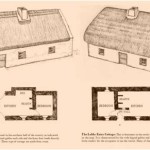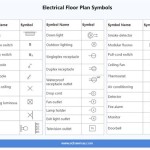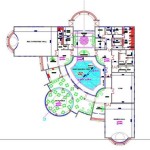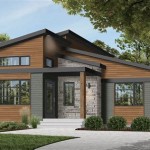Log House Plants Cottage Grove, OR: A Guide to Indoor Greenery in Rustic Settings
Log homes evoke a sense of rustic charm and connection with nature. Incorporating houseplants into these spaces further enhances this aesthetic, creating a harmonious blend of the indoors and outdoors. Cottage Grove, Oregon, nestled in the Willamette Valley, provides an ideal climate for cultivating a variety of indoor plants that thrive in the filtered light and moderate temperatures characteristic of log homes.
Selecting the right plants for a log home in Cottage Grove requires consideration of several factors. The prevalence of wood surfaces can influence humidity levels, while the size and layout of the home, including window placement and orientation, will dictate the amount of natural light available. Understanding these environmental factors is crucial for ensuring plant health and longevity.
Light availability is arguably the most critical factor. East-facing windows offer gentle morning sun, ideal for plants that prefer indirect light. South-facing windows provide the most intense light, suitable for sun-loving species. West-facing windows receive strong afternoon sun, which can be harsh for some plants. North-facing windows provide the least amount of light and are best suited for shade-tolerant varieties.
Humidity levels in log homes can fluctuate, particularly during drier seasons. Grouping plants together can create a microclimate with increased humidity. Alternatively, using a humidifier or placing plants on trays filled with pebbles and water can achieve a similar effect. Regularly misting foliage can also provide a temporary humidity boost.
Choosing appropriate plant species is essential for success. Low-light tolerant plants, such as snake plants (Sansevieria trifasciata), ZZ plants (Zamioculcas zamiifolia), and cast iron plants (Aspidistra elatior), are well-suited for areas with limited natural light. These plants are also relatively low-maintenance and tolerant of fluctuating humidity levels.
For spaces with brighter, indirect light, consider options like peace lilies (Spathiphyllum), pothos (Epipremnum aureum), or philodendrons (Philodendron). These plants offer a variety of foliage shapes, sizes, and colors, adding visual interest to the log home environment. They also contribute to improving indoor air quality.
If a log home boasts south-facing windows with ample sunlight, sun-loving plants like succulents, cacti, and some varieties of flowering plants can thrive. However, it's important to monitor their watering needs carefully, as excessive moisture can lead to root rot.
Incorporating larger plants can create focal points within the log home. Fiddle leaf figs (Ficus lyrata), monstera deliciosa (Monstera deliciosa), and rubber plants (Ficus elastica) can add a dramatic touch of greenery. These plants often require more space and attention to humidity and light levels but provide a significant visual impact.
Vertical gardening techniques can maximize space and add visual interest, especially in log homes with high ceilings. Hanging plants from beams or utilizing wall-mounted planters can create a cascading effect, bringing the outdoors in. Trailing plants like pothos, English ivy (Hedera helix), and spider plants (Chlorophytum comosum) are excellent choices for vertical gardens.
The rustic aesthetic of log homes lends itself well to incorporating natural materials into plant displays. Wooden planters, woven baskets, and terracotta pots complement the log walls and furnishings. Consider using reclaimed wood or repurposed containers to further enhance the rustic charm.
Beyond aesthetics, houseplants offer numerous benefits for indoor environments. They contribute to improved air quality by filtering out pollutants and releasing oxygen. Studies have also shown that the presence of plants can reduce stress levels and promote a sense of well-being.
Maintaining the health of houseplants in a log home requires regular care and attention. Proper watering practices, appropriate fertilization, and occasional repotting are essential for ensuring optimal growth. Monitoring for pests and diseases is also crucial for preventing infestations and maintaining plant health.
Local resources in Cottage Grove, such as nurseries and garden centers, can provide valuable guidance on plant selection and care. These resources offer expert advice tailored to the specific climate and growing conditions of the Willamette Valley, ensuring the success of indoor gardening endeavors in log homes.
The incorporation of houseplants into the rustic setting of a log home in Cottage Grove, Oregon, creates a unique and inviting atmosphere. By carefully considering the specific environmental factors and selecting appropriate plant species, residents can cultivate thriving indoor gardens that enhance the natural beauty of their log homes.

A Botanical Force Alice Doyle Of Loghouse Plants Slowflowers Journal

Pacific Horticulture A Botanical Force

2024 Variety Lists Log House Plants

Tour Gardens Log House Plants In Cottage Grove Dream Garden Inspiration Backyard

Erflybb Variety List 2024 Log House Plants

Cottage Grove Or Cabins For Landsearch

4 Bedroom Apartments For In Cottage Grove Or 1 Als Trulia

Cottage Grove Vacation Als Homes Oregon United States Airbnb

Cottage Grove Or Real Estate Homes For Com

Zinnia Cupcakes Deep Orange Friends School Plant








